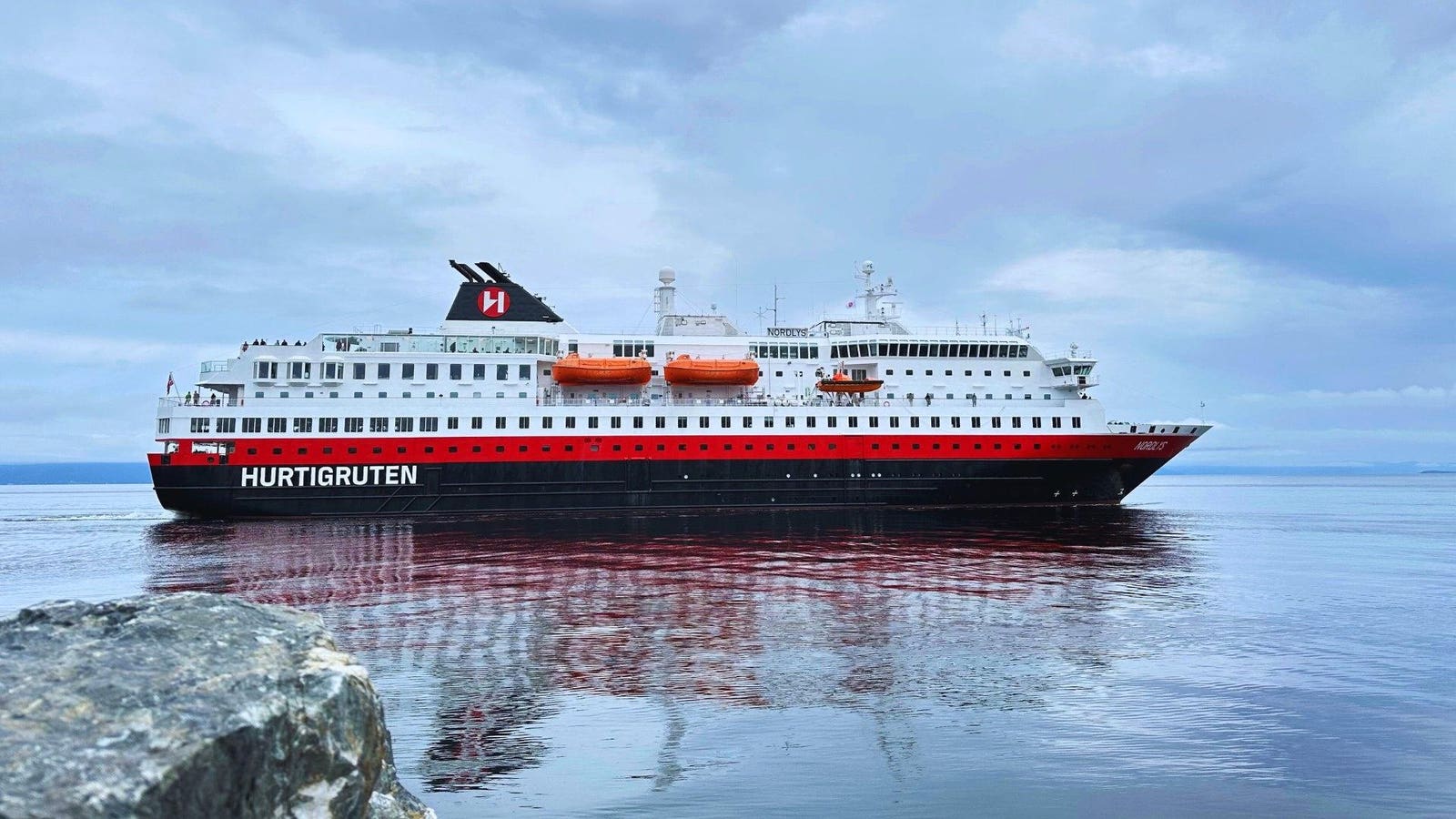Hurtigruten coastal cruise ferries are an iconic sight along the Norwegian coastline.
David Nikel
Norway’s Hurtigruten group has been acquired by an ownership group consisting of existing investors. Hurtigruten CEO Hedda Felin called the move a “significant milestone.”
A large chunk of existing debt will be written off as creditors take the wheel, while an investment of more than $380 million is set to breathe new life into the cruise line, which has struggled financially since the pandemic.
Hurtigruten has for some time been a complex business. It runs coastal cruises on the historic Norwegian coastal route, but also operates expedition cruises and runs travel services in both mainland Norway and Svalbard.
With the expedition cruise business set to be fully spun off, the new owners intend to focus Hurtigruten back on its core destination of Norway once the financials are completed in January 2025.
Financial Stability
First and foremost, the new ownership structure and investment should bring some much-needed stability to the group, which has struggled with financial uncertainty for the last few years.
The transaction will reduce the outstanding debt of the company and its parent company by over €1 billion, resulting in a remaining debt of approximately €400 million, according to a press release.
Part of the debt will be converted into shares in the company that operates the traditional Norwegian business, providing coastal transport along the Norwegian coast. Additional debt will also be introduced, and some existing maturities will be extended.
Existing investors including Arini Capital Management, AlbaCore Capital, Barings and Cyrus Capital Partners have stepped up to lead the takeover.
Present majority owners—London-based private equity firm TDR Capital, which included notable Norwegian business profiles Trygve Hegnar and Petter Stordalen—do not feature on the new-look board.
Felin, who will remain in place to lead the Norway-focused business, expressed her gratitude to the outgoing investors.
Expedition Cruises Will Be Separate
Hurtigruten is best known for its operations on the 130-year-old Norwegian coastal route, but has faced stiff competition from newcomer Havila Voyages in recent years.
Since losing part of its exclusive contract, the company shifted some of its ships into expedition-based tourism, eventually launching Hurtigruten Expeditions, which rebranded to HX.
The acquisition marks the end of the division between HX and Hurtigruten, allowing the latter to fully focus on Norway once again. From January 2025, both Hurtigruten and HX will exist as standalone entities with their own ownership and leadership teams.
A Focus On Norway
The focus on Norway is an important strategic move for Hurtigruten, which has seen rival company Havila Voyages win awards for its battery-powered ships.
Although Hurtigruten has made substantial investments in its fleet, much of that investment including some impressive new builds have been in the HX expeditions part of the group.
At present the Norway business includes seven ships operating the Norwegian coastal route, together with MS Trollfjord. The refurbished ship is used on Hurtigruten’s new cruise-only ‘signature voyages’, including the Svalbard Line from Bergen to Longyearbyen.
Whether the renewed focus on Norway will see an expansion of these more cruise-like experiences remains to be seen.
Felin said Hurtigruten “will remain a group consisting of our operations along the Norwegian coast and in Svalbard. We will deliver the same great guest experiences” adding that there will be no consequences for employees, guests, or partners.
MORE FROM FORBESForbesWhy Norway Is Now A Year-Round Cruise Travel DestinationBy David NikelForbesSee Inside ‘Trollfjord,’ Hurtigruten’s Signature Coastal Cruise ShipBy David NikelForbesWorking As A Head Chef On A Cruise Ship In NorwayBy David Nikel
